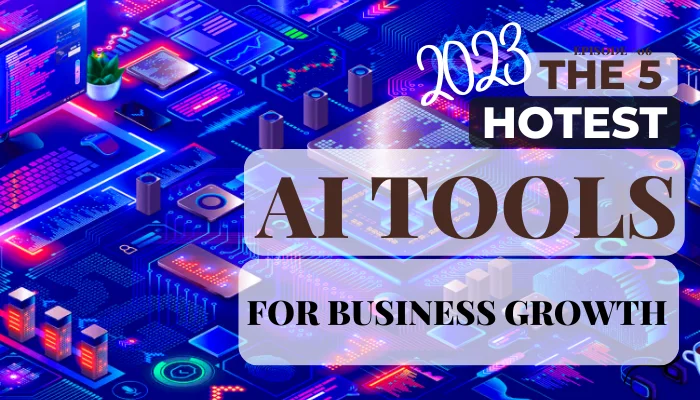
Skyrocket Success with 11 Business Intelligence Tools You Need to Know
In today’s data-driven world, businesses are drowning in information. The key to survival and, more importantly, success, lies in the ability to extract meaningful insights from this ocean of data. This is where Business Intelligence (BI) tools come into play. These powerful instruments transform raw data into actionable intelligence, empowering businesses to make informed decisions, optimize operations, and ultimately, skyrocket their success.
This article delves into 11 essential business intelligence tools that every modern business should know. We will explore their functionalities, benefits, and how they can be leveraged to gain a competitive edge. From small startups to large enterprises, these tools offer solutions for various needs and budgets. Discover how these business intelligence tools can revolutionize your approach to data analysis and decision-making.
Understanding the Power of Business Intelligence
Before diving into specific tools, it’s crucial to understand the core principles of business intelligence. At its heart, BI is the process of collecting, analyzing, and interpreting data to gain insights that drive better business outcomes. This involves a range of activities, including data warehousing, data mining, online analytical processing (OLAP), and reporting.
The benefits of implementing business intelligence are numerous. They include improved decision-making, increased efficiency, enhanced customer satisfaction, and ultimately, higher profitability. By providing a clear and comprehensive view of business performance, BI tools enable organizations to identify trends, predict future outcomes, and proactively address challenges.
Essential Business Intelligence Tools to Consider
The market is saturated with business intelligence tools, each offering a unique set of features and capabilities. Here’s a curated list of 11 of the most impactful and widely-used tools, categorized for clarity:
Data Visualization and Reporting Tools
These tools excel at transforming complex data into easy-to-understand visuals, such as charts and graphs. They are crucial for communicating insights to stakeholders and making data accessible to everyone.
- Tableau: A leading platform for data visualization and business intelligence. Tableau offers a user-friendly interface and powerful analytical capabilities. It is known for its ability to create interactive dashboards and reports. Tableau is a versatile tool suitable for various industries.
- Microsoft Power BI: Integrated with the Microsoft ecosystem, Power BI is a cost-effective and powerful business intelligence solution. It allows users to connect to various data sources, create compelling visualizations, and share insights easily. It is particularly well-suited for businesses already invested in Microsoft products.
- Qlik Sense: Qlik Sense offers a data discovery platform that uses an associative data model. This allows users to explore data in a more intuitive way. It emphasizes data exploration and self-service analytics.
Data Warehousing and ETL Tools
These tools focus on preparing and storing data for analysis. They extract, transform, and load (ETL) data from various sources into a centralized data warehouse.
- AWS Redshift: A fully managed, petabyte-scale data warehouse service offered by Amazon Web Services. Redshift is designed for high-performance analytics and is a popular choice for businesses with large data volumes.
- Google BigQuery: A cloud-based data warehouse service from Google Cloud Platform. BigQuery offers powerful query performance and is highly scalable. It is a good option for businesses already using Google Cloud services.
- Azure Synapse Analytics: Microsoft’s cloud-based data warehousing service, offering a unified platform for data warehousing and big data analytics. It integrates seamlessly with other Microsoft services.
Advanced Analytics and Data Mining Tools
These tools provide advanced analytical capabilities, including statistical analysis, predictive modeling, and data mining. They are used to uncover hidden patterns and insights within data.
- SAS: A comprehensive analytics platform used by many large organizations. SAS offers a wide range of statistical and analytical tools, including data mining, machine learning, and predictive modeling.
- IBM Cognos Analytics: An integrated business intelligence platform that provides reporting, analysis, and dashboarding capabilities. Cognos is known for its robust features and enterprise-grade performance.
Open Source Business Intelligence Tools
These tools offer cost-effective solutions with the flexibility of open-source platforms.
- Metabase: A simple and open-source business intelligence tool that allows users to ask questions about their data and visualize the results. Metabase is known for its ease of use and quick setup.
- Apache Superset: A modern, open-source data exploration and visualization platform. Superset offers a wide range of visualization options and supports various data sources.
- Pentaho: An open-source business intelligence suite offering ETL, data integration, and analytics capabilities. Pentaho provides a comprehensive platform for data management and analysis.
Choosing the Right Business Intelligence Tool
Selecting the right business intelligence tool is crucial for maximizing its impact. The best tool depends on your specific business needs, budget, and technical expertise. Consider the following factors:
- Data Sources: Identify the data sources you need to connect to.
- Budget: Determine your budget for software, hardware, and training.
- Technical Expertise: Assess the technical skills of your team.
- Scalability: Ensure the tool can handle your current and future data volumes.
- Features: Evaluate the features offered by each tool.
Conduct thorough research, compare different tools, and consider a trial period before making a final decision. Think about the future and plan for growth. [See also: How to Evaluate Business Intelligence Software]
Implementing and Leveraging Business Intelligence
Once you’ve chosen a tool, successful implementation is key. This involves:
- Data Integration: Connecting to and integrating your data sources.
- Data Modeling: Structuring your data for analysis.
- Dashboard Design: Creating effective dashboards and reports.
- Training: Providing training to your team.
- Monitoring: Continuously monitoring performance and making adjustments.
Regularly review your business intelligence initiatives to ensure they are aligned with your business goals. Seek feedback from users and make improvements based on their experiences. Successful implementation takes time and effort. [See also: Best Practices for Business Intelligence Implementation]
The Future of Business Intelligence
The field of business intelligence is constantly evolving. Emerging trends include:
- Artificial Intelligence (AI) and Machine Learning (ML): AI and ML are being integrated into BI tools to automate analysis, predict future outcomes, and provide more intelligent insights.
- Cloud-Based Solutions: Cloud-based BI solutions are becoming increasingly popular due to their scalability, cost-effectiveness, and ease of access.
- Self-Service Analytics: Self-service analytics tools empower business users to analyze data without relying on IT departments.
- Data Democratization: The trend towards making data accessible to everyone in an organization.
Staying informed about these trends is critical for maintaining a competitive edge. The future of business intelligence promises even more powerful and accessible tools, enabling businesses to make smarter decisions and achieve greater success.
Conclusion: Unlock Your Potential with Business Intelligence
Business intelligence tools are no longer a luxury; they are a necessity for businesses that want to thrive in today’s data-driven environment. By leveraging the power of these tools, you can transform raw data into actionable insights, optimize your operations, and make informed decisions that drive growth. The 11 tools highlighted in this article represent a starting point for your exploration. Choose the tools that best fit your needs, implement them effectively, and unlock the potential of your data. The journey to data-driven success begins now.

